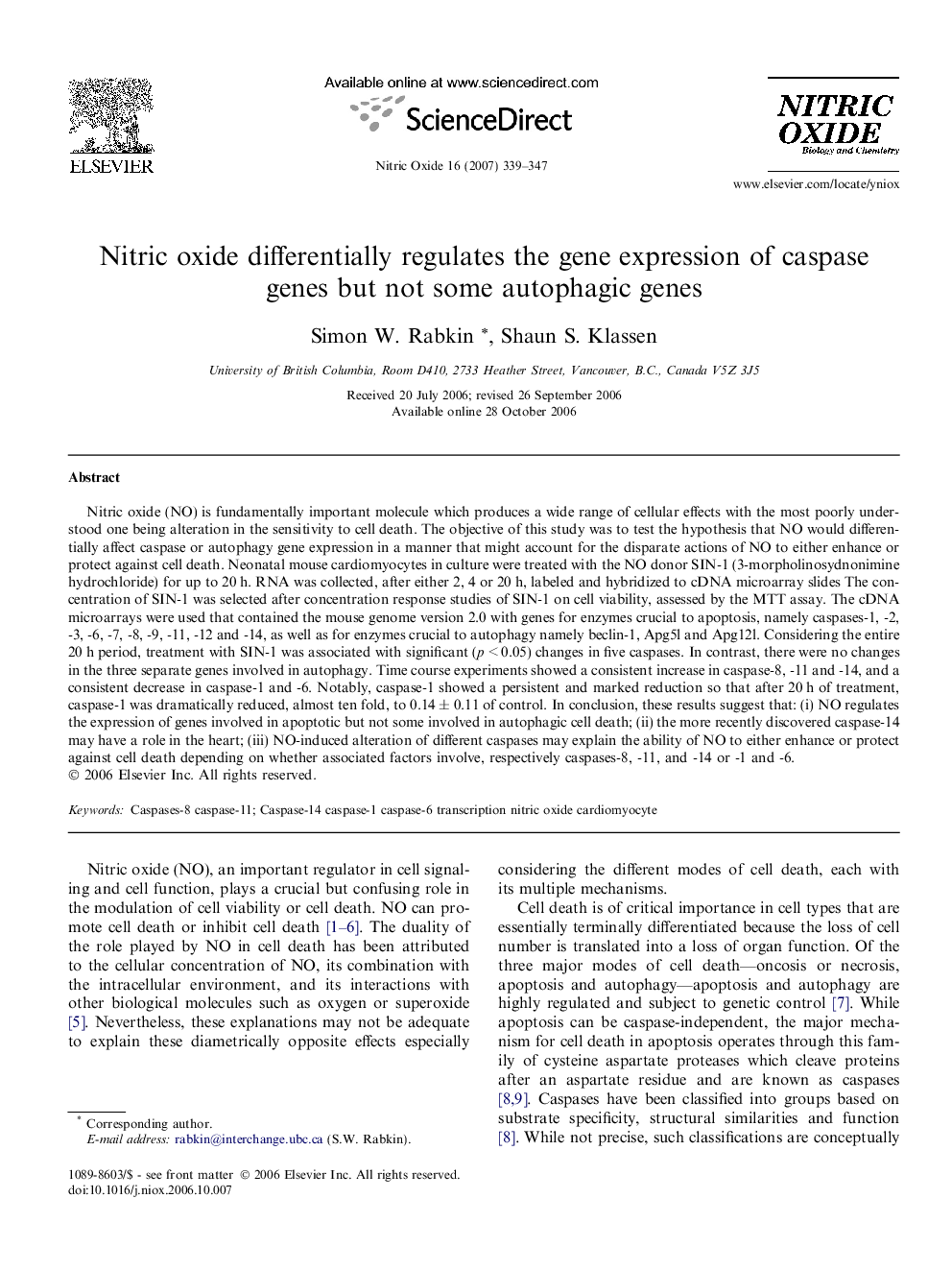| کد مقاله | کد نشریه | سال انتشار | مقاله انگلیسی | نسخه تمام متن |
|---|---|---|---|---|
| 2002056 | 1066084 | 2007 | 9 صفحه PDF | دانلود رایگان |

Nitric oxide (NO) is fundamentally important molecule which produces a wide range of cellular effects with the most poorly understood one being alteration in the sensitivity to cell death. The objective of this study was to test the hypothesis that NO would differentially affect caspase or autophagy gene expression in a manner that might account for the disparate actions of NO to either enhance or protect against cell death. Neonatal mouse cardiomyocytes in culture were treated with the NO donor SIN-1 (3-morpholinosydnonimine hydrochloride) for up to 20 h. RNA was collected, after either 2, 4 or 20 h, labeled and hybridized to cDNA microarray slides The concentration of SIN-1 was selected after concentration response studies of SIN-1 on cell viability, assessed by the MTT assay. The cDNA microarrays were used that contained the mouse genome version 2.0 with genes for enzymes crucial to apoptosis, namely caspases-1, -2, -3, -6, -7, -8, -9, -11, -12 and -14, as well as for enzymes crucial to autophagy namely beclin-1, Apg5l and Apg12l. Considering the entire 20 h period, treatment with SIN-1 was associated with significant (p < 0.05) changes in five caspases. In contrast, there were no changes in the three separate genes involved in autophagy. Time course experiments showed a consistent increase in caspase-8, -11 and -14, and a consistent decrease in caspase-1 and -6. Notably, caspase-1 showed a persistent and marked reduction so that after 20 h of treatment, caspase-1 was dramatically reduced, almost ten fold, to 0.14 ± 0.11 of control. In conclusion, these results suggest that: (i) NO regulates the expression of genes involved in apoptotic but not some involved in autophagic cell death; (ii) the more recently discovered caspase-14 may have a role in the heart; (iii) NO-induced alteration of different caspases may explain the ability of NO to either enhance or protect against cell death depending on whether associated factors involve, respectively caspases-8, -11, and -14 or -1 and -6.
Journal: Nitric Oxide - Volume 16, Issue 3, May 2007, Pages 339–347